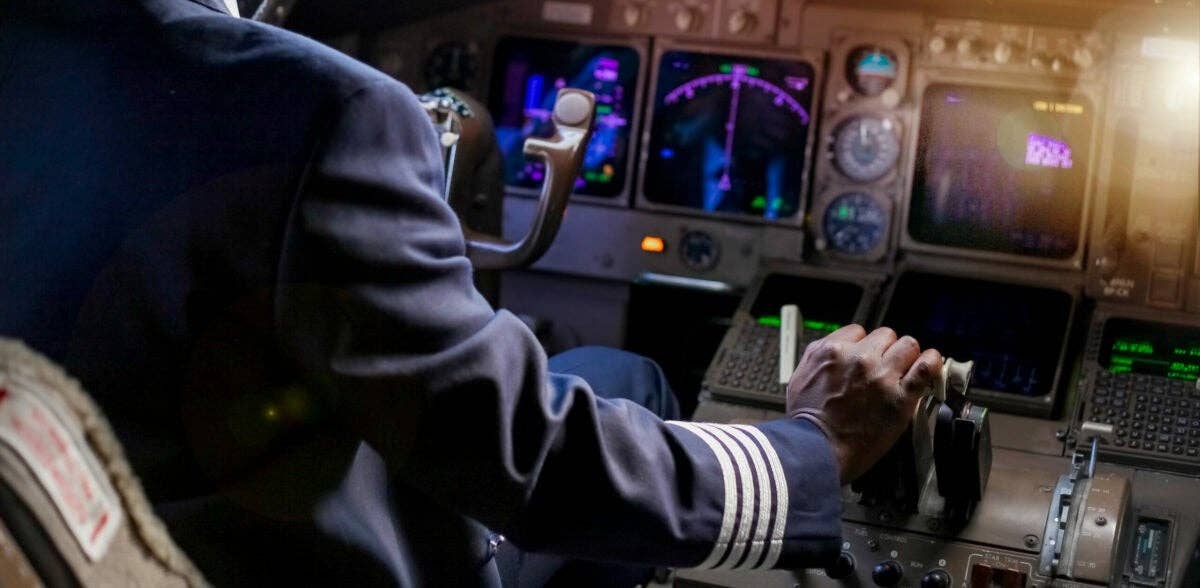Choosing the CFI Route
While flight instructing is not for everyone, there are major advantages while on the journey to becoming a professional pilot.

While flight instructing is not for everyone, there are major advantages while on the journey to becoming a professional pilot. [File Photo: Adobe Stock]
In my previous installment of V1 Rotate, I noted some of the reasons that a fledgling professional pilot might choose not to flight instruct, and listed a number of alternate means of time-building. Most of those alternative jobs, however, have their own downsides in terms of pay, safety, being VFR-only, only being available in certain areas, or being tough to break into.
I noted that the well-connected candidate with geographic flexibility is likely to have the most choice in how they get to 1,000 hours and beyond. The unspoken implication, which I most certainly did not intend, is that awkward homebodies might have to resign themselves to flight instructing after all.
I really dislike the idea, rather widespread in some quarters, that flight instruction is the time-building method of last resort. I need to be careful about how I say this, because as I’ve noted before, there’s a strong tendency in aviation for more experienced pilots to dole out advice to newcomers based on what worked for them 20 years ago—and a related attitude that insists that because one paid their dues in a certain manner, the new kids must do so as well. I try to avoid both fallacies. I do recognize that flight instructing is not for everyone. I know the downsides are real; I lived them, and the memories are still vivid two decades later.
And yet, so much of the “flight instructing sucks” discussion places the job in relation to those that are not necessarily obtainable to the average 300-hour pilot, rather than the more realistic alternatives. And flight instructing does, in fact, have some major upsides. No, instructing isn’t for everyone, but I do think it’s a better option than many of the naysayers realize; you’d be doing yourself a disservice to dismiss it out of hand.
One really major advantage of the CFI route is its availability and universality. There are FBOs, flight schools, academies, and collegiate flight programs in every corner of the country. The vast majority are willing to hire a 300-hour fresh CFI straight out of flight school, which is true of few other flying jobs. This isn’t to say you won’t have to pound the pavement to find the right fit for you, or that you won’t have to establish a relationship and convince them to hire you—but you’ll know where to start looking, and you won’t have to necessarily go far.
More to the point, you most likely won’t have to wait long to get hired and start building flight time. The sooner you get in the game and start grinding, the better. Aviation employers love job candidates with a continuous work history and a steady progression of flight time, while a lack of currency—or a history of lapses—is a red flag. A bird in the hand is definitely better than two in the bush here. If you can start instructing in two weeks, this is vastly preferable to taking three or four months off looking for a “better” alternative.
The universality of the job also lends itself to portability. Once you are instructing actively, you’ll tend to have more options. Not getting many hours during the winter in North Dakota? Make some calls to sunny Florida. School not maintaining their airplanes well or delaying that raise they promised? Dust off the resumé. A mercenary attitude can help stave off some of the downsides of the job. This isn’t necessarily true of some of the other entry-level positions like diver-driving or banner towing, where there are far fewer operators in any given area and most hiring takes place before the high season.
I won’t lie, being a CFI can be hard at times, with long hours, inadequate pay, indifferent aircraft, a high level of dependency on weather, and the occasional frightening close call. These seem to be common themes among entry-level jobs. It’s just the price of admission. The better schools minimize some negatives (low pay, poor maintenance), and others change as you gain experience and are assigned more advanced students (weather cancellations, nature of the close calls).
The instructing itself, on the other hand, can be incredibly rewarding. If you love flying and are good at it, there’s absolutely nothing better in aviation than passing on that love and those skills to another human, seeing their eyes light up when they “get it.” I enjoyed flying with the majority of my students and kept in contact with some of them for years afterward.
Many new commercial pilots doubt whether they have the ability or the patience to teach. So did I. The actual teaching is really not that difficult, the FAA’s emphasis on Fundamentals of Instruction notwithstanding. You’re not teaching high-schoolers trigonometry here. You’re basically just a knowledgeable enthusiast explaining something you enjoy to someone who’s motivated to learn and letting them flail around a bit, mostly learning from their own mistakes, keeping things from going too far, and giving them the occasional pointer.
Instructing requires a reasonable base of knowledge, some humility, some empathy and patience, basic communication skills, and a little familiarity with human nature. Those are pretty much the requirements for everything you’ll do in aviation, by the way. When I think back to the crappy instructors I’ve known over the years—and I’ve met a few—lack of teaching ability was never the problem. It was always a large ego that got defensive about gaps in their skills or knowledge—or else they simply didn’t want to be there, considered instructing beneath them, and were indifferent about helping their students succeed.
I often hear the charge that flight instructing is excruciatingly boring. This one really flabbergasts me. Flight instructing was many things to me, but boring was never one of them. Mind you, the rare near-death experiences certainly kept me on my toes, but besides that, I had a wide variety of students from private to ATP, each one had different strengths and weaknesses, and I varied my lesson plans daily according to their recent triumphs and stumbles and to accommodate the vagaries of weather. I took my students to a wide variety of airports to give them the broadest possible experience, and often our destination was determined by what sort of grub we were in the mood for. If you find flight instruction boring, you’re doing it wrong—and jet flying may render you downright catatonic!
If, knowing all this, you still prefer a job where you’re the one manipulating the controls at least half the time, I can’t fault you that. I still enjoy the physical act of flying and get to partake every other leg. But regardless of the path you choose, I’d highly suggest you at least get your CFI certificate. You’ll learn a ton, and you never know when it will come in handy.

Sign-up for newsletters & special offers!
Get the latest FLYING stories & special offers delivered directly to your inbox






